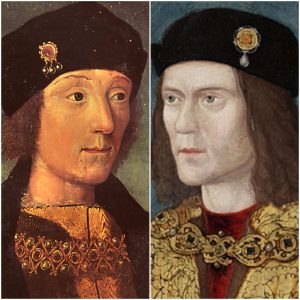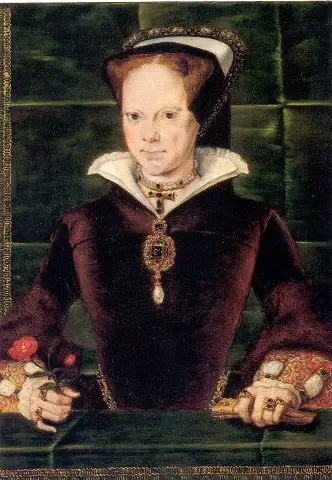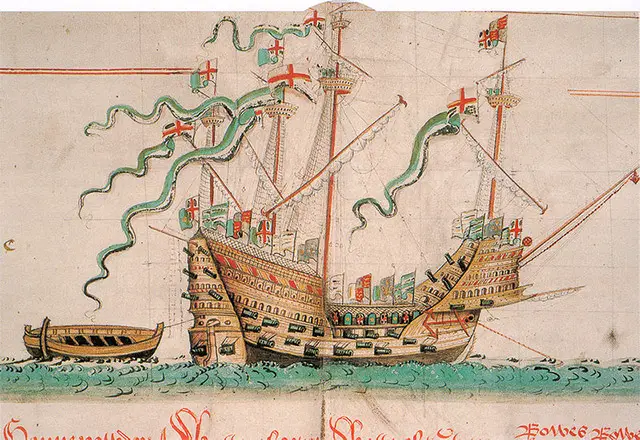 On this day in history, the 22nd August 1485, in rural Leicestershire near Market Bosworth, the armies of King Richard III and Henry Tudor faced each other in a battle that would see the death of the King and the beginning of a new dynasty: the Tudor dynasty.
On this day in history, the 22nd August 1485, in rural Leicestershire near Market Bosworth, the armies of King Richard III and Henry Tudor faced each other in a battle that would see the death of the King and the beginning of a new dynasty: the Tudor dynasty.
When Henry Tudor challenged the King on that August day, Richard III had been King for just over two years. He had gone from being Lord Protector to the young King Edward V, the twelve-year-old son of Richard's brother Edward IV, to being King after Edward IV's sons were declared illegitimate. His challenger, Henry Tudor, was the son of Edmund Tudor, 1st Earl of Richmond, and Lady Margaret Beaufort, a woman descended from John of Gaunt, third son of Edward III. As a Lancastrian, Henry had fled to Brittany in France, after Edward IV successfully regained the throne from Henry VI in 1471. He returned to England after his mother had conspired with Elizabeth Woodville, Edward IV’s widow, to arrange a marriage between Elizabeth's daughter, Elizabeth of York, and Henry, and to promote Henry as an alternative to Richard III.
In the summer of 1485, Henry made his move. With the support of the French and some English exiles, he sailed from France to Milford Haven on the Welsh coast to declare war on the King. His Welsh heritage enabled Henry to gain more support there and add to his army, and when he finally met Richard at Bosworth, it is estimated that he had around 5000 men. Henry requested the support of his stepfather, Lord Thomas Stanley, and his step-uncle, Sir William Stanley, who were both wealthy men and could raise large armies to support Henry. The Stanleys, although linked to Henry through Thomas's marriage to Margaret Beaufort, were actually supporters of the King, so it was not known who they would support on the battlefield. Richard, on hearing of Henry's landing in Wales, took Thomas Stanley's eldest son, Lord Strange, hostage in an attempt to ensure that the Stanleys would stay true.
Although Henry had managed to build an army of around 5000 men, Richard's men, who were marching out from Leicester in an attempt to cut Henry off as he marched from Wales to London, are thought to have numbered around 12000. Richard must have felt confident that he could squash Henry, particularly when they finally met, and Henry's men were struggling to negotiate marshland while Richard's men were on higher ground. Richard and his army certainly had the advantage, particularly as Henry had no battle experience whatsoever.
Richard took the initiative and sent the Duke of Norfolk and some men out to attack Henry's men who had become strung out in a line below them after being forced to circle around the marsh. Fortunately for Henry, he had the Earl of Oxford, an experienced soldier on his side, who knew just what to do. Oxford quickly created a wedge of men between two banners and, in the fighting that followed, the Duke of Norfolk was killed – a blow for the King, but he still had a huge army at his disposal. Things looked good for the King until the Stanleys, who had been watching events unfold, but had not committed their armies to any particular side, made a decision. As Richard III's cavalry clashed with Henry and his men, who had been on their way to appeal to the Stanleys, William Stanley ordered his men to attack the King and his cavalry. Before the Stanleys and their men reached Henry and Richard, Richard’s men managed to kill Henry’s standard bearer, Sir William Brandon (father of Charles Brandon, Duke of Suffolk), and unhorse Sir John Cheyne, but the tide turned when Stanley's men reached the spot. King Richard III was killed and Henry Tudor was crowned King Henry VII later that day when Richard's crown was recovered.
Richard III's body was recovered from the battlefield and taken to Leicester, where it was displayed for several days before being buried.
The new king, Henry VII, secured his claim to the throne by marrying Elizabeth of York on the 18th January 1486, thus uniting the Houses of York and Lancaster and starting a new dynasty: The House of Tudor. The emblem of the Tudor Rose symbolised this union by combining the white rose of York and the red rose of Lancaster. This was the start of a new era, the reign of the Tudors, that iconic family who reigned over England for just 118 years, but who have captured the hearts and minds of many people all over the world.
Tudor Life magazine contributor and author Beth von Staats has written an article on her blog about how the opinions of many about King Richard III are coloured through the keyhole view provided by Saint Thomas More - see http://queenanneboleyn.com/2017/08/22/dropped-quill-saint-thomas-richard-iii-died-battle-august-22-1485/.
Also on this day in history, 22nd August 1553, the execution of John Dudley, Duke of Northumberland - click here to read more.
(Extract from On This Day in Tudor History by Claire Ridgway)
Further Reading and Resources for members
- Henry VII e-book
- The Tudors' Journey to Bosworth: Part 7 – The Battle of Bosworth by Tony Riches
- Expert Talk: Susan Fern on Bosworth’s Lost Commander
- The August 2016 edition of Tudor Life magazine contained articles from Leanda de Lisle on Owen Tudor and Debra Bayani on the lead-up to the Battle of Bosworth.
- The Battle of Bosworth Quiz



Henry indeed needed to keep his promise to marry, after re legitimizing, Elizabeth of York in his first Parliament, because although he had conquered by right of arms or some such phrase, a legitimate way to become King in the Medieval period, he still needed the support of a Yorkist gentry and surviving nobles and royal family. His crowning on Bosworth was symbolic. Fortunately, his march through Wales and the March towns had meant some key areas submission and a string of noble houses remained neutral in those areas. His mother was a powerful dynastic power in herself, from the Lancastrian point of view and he was a step nephew of Henry Vi. Elizabeth was seen as the surviving heir to the York crown as Edward iv eldest child and nobody knew what had happened to her brothers, but many believed the rumours that they were dead, but of course for Henry it was convenient they remained so. His first task was to backdate his reign to the day before Bosworth and make it treason to have fought against him. He gave 30 days to submit and most saw no real alternative and he was accepted but he still had work to do. His first Parliament made Elizabeth and her sisters legitimate once more, but the repeal of the Titular Regis is debatable as he only had read the first 14 lines. The copies were then all destroyed, but the original saved. Henry was crowned first to establish his own authority and he finally married Elizabeth in January 1486. He was, however, soon under pressure, as the battle of stoke led by Richard’s heir, John Earl of Lincoln shows.
Should read East Stoke.
Henry Tudor won and unexpected victory, backed by the treacherous Stanley brothers who sat on the sidelines. Had they remained there and not came crashing into the rear of the Kings men, fighting Henry’s Welsh and Breton pikes and charged them down, cutting down Richard and his knights, Richard would have killed Henry and his men and the victory would have been his. Thus was the twist of fate that created the Tudor Dynasty. Those who remained faithful also fell, the elite of the Government of Richard iii, but not before he, himself had felled the giant Sir John Cheney and killed William Brandon, knighted that morning, Henry’s banner bearer. His baby son, Charles would be raised at the Court of Henry Vii and become the great and close friend of his son, Henry Viii. Fate is a strange thing.
Remember before God, Richard, King of England, and all who fell at Bosworth, having kept faith, on this day, 22nd August 1485. May they rest in peace. Loyalie Me Lie. Amen